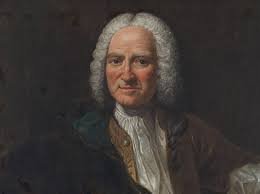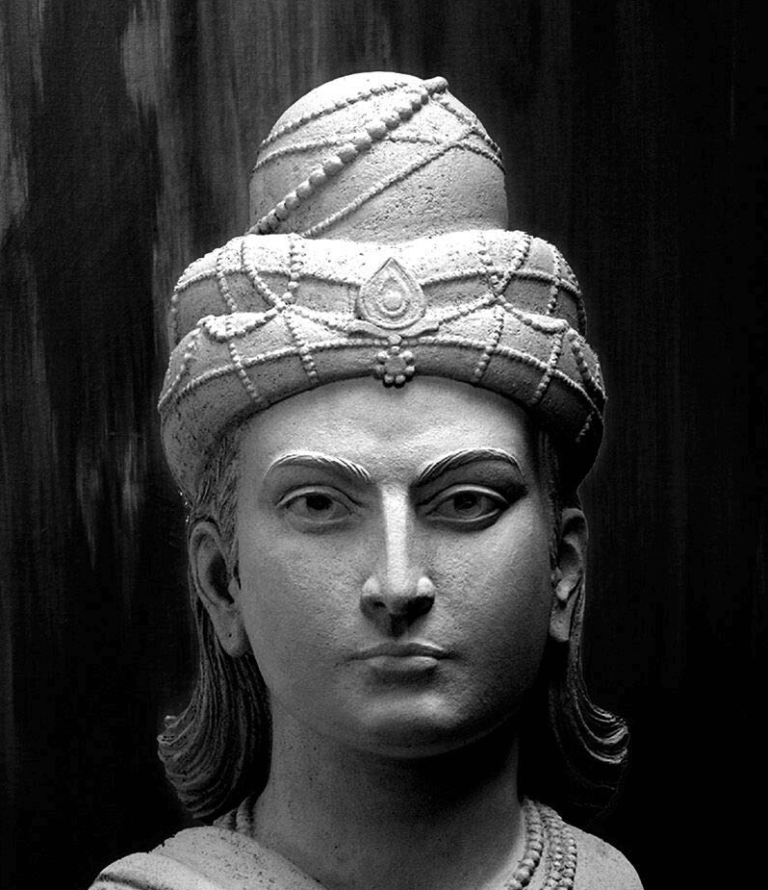आरएसएस और हिंदू महासभा ने स्वतंत्रता से पहले भारत में सांप्रदायिक दंगे कैसे फैलाए
Introduction | प्रस्तावना
Before India’s independence, the subcontinent was a complex mosaic of religions, languages, and cultural identities. Amid this diversity, certain political and ideological organisations attempted to consolidate power by manipulating religious sentiments. Among these, the Rashtriya Swayamsevak Sangh (RSS) and the Hindu Mahasabha played leading roles in promoting a homogenised Hindu identity through propaganda that frequently provoked communal discord and riots.¹
Table of Contents
भारत की स्वतंत्रता से पहले समाज की संरचना बहुधार्मिक और विविध थी। इसी माहौल में कुछ संगठनों ने धार्मिक भावनाओं का राजनीतिकरण किया। राष्ट्रीय स्वयंसेवक संघ (आरएसएस) और हिंदू महासभा ने “हिंदू राष्ट्र” की विचारधारा फैलाने के लिए ऐसा वातावरण तैयार किया जिसने कई बार दंगों की नींव रखी।
Historical Background | ऐतिहासिक पृष्ठभूमि
The Hindu Mahasabha, established in 1915, initially sought to represent Hindu interests within the colonial political framework but gradually evolved into a communal organisation under Vinayak Damodar Savarkar, who articulated the doctrine of Hindutva in his 1923 treatise Hindutva: Who Is a Hindu?²
The RSS, founded in 1925 by Keshav Baliram Hedgewar, sought to “unify” Hindus through ideological and physical training. While presented as cultural revivalism, its methods mirrored European fascist movements, emphasizing discipline, hierarchy, and secrecy.³
हिंदू महासभा (1915) की स्थापना हिंदू हितों के प्रतिनिधित्व के नाम पर हुई थी, लेकिन सावरकर के हिंदुत्व ग्रंथ (1923) ने इसे स्पष्ट रूप से सांप्रदायिक दिशा दी।
आरएसएस (1925) ने शाखाओं के माध्यम से अनुशासन, निष्ठा और वैचारिक प्रशिक्षण का संगठन बनाया — जिसका ढांचा यूरोपीय फासीवादी मॉडलों से मिलता था।⁴
Modus Operandi: Strategies of Communal Mobilisation
सांप्रदायिक लामबंदी की रणनीतियाँ
1. Propaganda Through Pamphlets and Newspapers
One of the most effective methods used to incite communal tension was the mass circulation of pamphlets and local newspaper stories alleging Muslim atrocities—usually exaggerated or fabricated.⁵
These pamphlets often depicted Muslims as aggressors and Hindus as victims of historical wrongs.
1930 के दशक के हिंदी और मराठी अख़बारों में झूठी ख़बरें प्रकाशित की जातीं — जैसे “मुसलमानों द्वारा गौवध,” “मंदिरों का अपमान,” या “ज़बरदस्ती धर्मांतरण।”⁶
2. Anonymous Letters and Hidden Identity
British intelligence frequently intercepted anonymous letters dropped in temples and bazaars warning Hindus of alleged Muslim conspiracies. These were later traced to local activists associated with the Hindu Mahasabha and RSS.⁷
The anonymity protected instigators while creating an atmosphere of distrust.
ब्रिटिश खुफ़िया रिकॉर्डों में ऐसे अनाम पत्रों का उल्लेख है जिन्हें “मुस्लिम आक्रमण की चेतावनी” के रूप में फैलाया जाता था — लेकिन जांच में इनके पीछे दक्षिणपंथी कार्यकर्ता पाए गए।⁸
3. Fabricated “Atrocity Stories”
Stories of Muslim assaults on Hindu women or temples were fabricated to evoke anger and fear. “Protect your sisters,” “Save the cow,” and “Defend your dharma” became standard rallying cries.⁹
These moral panics often escalated into riots within days.
“बहनों की रक्षा करो,” “गौ माता की रक्षा करो” जैसे नारे अफवाहों के माध्यम से दिए जाते थे ताकि हिंदू जनसमूह उकस जाए।⁰
4. Provocative Processions During Festivals
Religious processions were intentionally routed through Muslim neighbourhoods, accompanied by loud music or provocative slogans. When Muslims protested, violence ensued, and Hindu organisations portrayed themselves as victims.¹¹
This tactic was common in Bengal, the United Provinces, and Maharashtra during the 1930s and 1940s.¹²
धार्मिक जुलूसों को जानबूझकर मुस्लिम मोहल्लों से गुजारा जाता था और विरोध होने पर उसे “मुस्लिम आक्रमण” बताया जाता था।¹³
5. Organised Cadres and Shakhas
The RSS’s shakha (branch) system trained cadres in physical exercises, parades, and ideological lectures. During riots, these disciplined groups acted as organised mobs disguised as spontaneous crowds.¹⁴
आरएसएस की शाखाओं में नियमित अनुशासन और विचारधारात्मक प्रशिक्षण से “तत्पर स्वयंसेवक” तैयार किए जाते थे जो दंगे के समय भीड़ का नेतृत्व करते।¹⁵
6. Concealment and False-Flag Operations
Several intelligence files document cases where instigators disguised themselves in Muslim dress or used Muslim aliases to distribute inflammatory pamphlets.¹⁶
This “false-flag” operation confused communities and made identification of perpetrators difficult.¹⁷
कुछ दंगों में पाया गया कि कुछ उकसाने वाले व्यक्ति “मुस्लिम पोशाक” में पर्चे बाँटते थे ताकि हिंदू और मुस्लिम दोनों एक-दूसरे को दोष दें।¹⁸
Case Studies | ऐतिहासिक उदाहरण
A. Cow Protection Riots (1893–1920)
The cow protection movement was a prototype of communal mobilisation. Hindu Sabha activists distributed pamphlets against Muslim butchers, calling them “enemies of the nation.”¹⁹
B. Shuddhi Campaigns (1920s)
The Hindu Mahasabha’s reconversion drives (Shuddhi) often sparked local violence, especially in UP and Punjab, where Muslims resisted perceived coercion.²⁰
C. Bengal Riots (1941–1946)
Governor Sir Frederick Burrows’ confidential notes mention “Hindu nationalist and Muslim League publications circulating exaggerated atrocity reports,” often to incite revenge.²¹
D. Nagpur and Pune Incidents (1930s–40s)
CID reports from Central Provinces observed that RSS activists distributed handbills predicting “Muslim attacks” before Ganesh festivals — none of which were verified.²²
Why These Strategies Worked | यह रणनीतियाँ क्यों सफल रहीं
- Emotional Symbols: Cows, temples, and women’s honour became moral triggers.
- Information Asymmetry: Rumours spread faster than administrative truth.
- Anonymity: Made prosecution impossible.
- Organisational Discipline: RSS cadres ensured efficiency and coordination.²³
धार्मिक प्रतीक, अफवाहें, और संगठित कार्यकर्ताओं की मदद से यह प्रचारक तंत्र बेहद प्रभावशाली बना।²⁴
British Intelligence Reports | ब्रिटिश खुफ़िया रिपोर्टें
A 1943 British intelligence report described the RSS as “a harbourage of potential danger, exhibiting fascist tendencies.”²⁵
Another noted that Hindu Mahasabha propaganda “aggravates communal hatred under patriotic disguise.”²⁶
1943 की रिपोर्टों में आरएसएस को “फासीवादी प्रवृत्तियों वाला खतरनाक संगठन” बताया गया और महासभा को “देशभक्ति के नाम पर घृणा फैलाने वाला।”²⁷
Ideological Framework | वैचारिक ढांचा
Savarkar’s Hindutva defined Indian identity through religion — equating “Hindu” with “national.”²⁸
This exclusionary nationalism created a mental environment where propaganda could flourish, casting Muslims as “outsiders.”²⁹
सावरकर का हिंदुत्व “धर्म आधारित नागरिकता” की अवधारणा थी जिसने “हम बनाम वे” की सोच को संस्थागत रूप दिया।³⁰
Impact on Society | समाज पर प्रभाव
By the 1940s, communal propaganda had fractured India’s pluralistic society. Formerly harmonious communities became deeply suspicious of each other.³¹
These methods—rumours, moral panics, hidden identity—continued into the Partition violence and post-independence riots.³²
1940 के दशक तक हिंदू-मुस्लिम समाजों में अविश्वास गहराने लगा था, जिसका चरम रूप विभाजन के समय दिखा।³³
Conclusion | निष्कर्ष
The pre-Independence communal propaganda by the RSS and Hindu Mahasabha was not spontaneous but a deliberate political strategy to unify Hindus under fear and resentment.³⁴
By weaponising religion through anonymous pamphlets, false atrocity stories, hidden identities, and provocative festivals, they normalised communal division.³⁵
स्वतंत्रता से पहले आरएसएस और हिंदू महासभा द्वारा फैलाया गया सांप्रदायिक प्रचार योजनाबद्ध था — धर्म को राजनीतिक हथियार बनाकर समाज को विभाजित करने की रणनीति।³⁶
Notes
- Christophe Jaffrelot, The Hindu Nationalist Movement and Indian Politics (New Delhi: Penguin, 1996), 23.
- V.D. Savarkar, Hindutva: Who Is a Hindu? (Poona: Veer Savarkar Prakashan, 1923), 5.
- Marzia Casolari, “In the Shade of the Swastika: Hindutva and Italian Fascism,” Economic and Political Weekly 35, no. 4 (2000): 289–296.
- Ibid., 290.
- Jaffrelot, Hindu Nationalist Movement, 56.
- Ibid., 58.
- National Archives of India, Home Political Files, 1938–43.
- Gyanendra Pandey, The Construction of Communalism in Colonial North India (Delhi: Oxford University Press, 1990), 132.
- Paul R. Brass, The Production of Hindu–Muslim Violence in Contemporary India (Seattle: University of Washington Press, 2003), 44.
- Ibid., 45.
- S. Das, “Communal Violence in Twentieth-Century Colonial Bengal,” JSTOR (2012): 9.
- Ibid., 13.
- Ibid., 14.
- Walter Andersen and Shridhar Damle, The Brotherhood in Saffron (New Delhi: Vistaar Publications, 1987), 67.
- Ibid., 69.
- Gyanendra Pandey, Remembering Partition: Violence, Nationalism, and History in India (Cambridge: Cambridge University Press, 2001), 25.
- British Library, India Office Records, Bengal Home Police Reports, 1939.
- Ibid.
- Sandria Freitag, Collective Action and Community (Berkeley: University of California Press, 1989), 108.
- Pandey, Construction of Communalism, 178.
- Burrows Papers, British Library, Governor’s Reports, 1945.
- National Archives of India, Home Dept. Political-B, File 1938.
- Andersen and Damle, Brotherhood in Saffron, 72.
- Ibid.
- British Library, IOR: L/P&J/12/516, “Political Department Reports, 1943.”
- Casolari, “In the Shade of the Swastika,” 291.
- Ibid.
- Savarkar, Hindutva, 12.
- Ibid., 17.
- Jaffrelot, Hindu Nationalist Movement, 65.
- Pandey, Remembering Partition, 42.
- Brass, Production of Violence, 59.
- Ibid., 60.
- Jaffrelot, Hindu Nationalist Movement, 90.
- Casolari, “Hindutva and Fascism,” 295.
- Brass, Production of Violence, 62.
Bibliography
- Andersen, Walter, and Shridhar Damle. The Brotherhood in Saffron: The Rashtriya Swayamsevak Sangh and Hindu Revivalism. New Delhi: Vistaar Publications, 1987.
- Brass, Paul R. The Production of Hindu–Muslim Violence in Contemporary India. Seattle: University of Washington Press, 2003.
- Burrows, Frederick. Governor’s Reports on Bengal Communal Disturbances (1941–46). British Library, London.
- Casolari, Marzia. “In the Shade of the Swastika: Hindutva and Italian Fascism.” Economic and Political Weekly 35, no. 4 (2000): 289–296.
- Das, S. “Communal Violence in Twentieth-Century Colonial Bengal.” JSTOR, 2012.
- Freitag, Sandria B. Collective Action and Community: Public Arenas and the Emergence of Communalism in North India. Berkeley: University of California Press, 1989.
- Jaffrelot, Christophe. The Hindu Nationalist Movement and Indian Politics. New Delhi: Penguin, 1996.
- Pandey, Gyanendra. The Construction of Communalism in Colonial North India. Delhi: Oxford University Press, 1990.
- Pandey, Gyanendra. Remembering Partition: Violence, Nationalism, and History in India. Cambridge: Cambridge University Press, 2001.
- Savarkar, Vinayak Damodar. Hindutva: Who Is a Hindu? Poona: Veer Savarkar Prakashan, 1923.



